Sixty-three percent of millennials and Generation Z in the US were unaware that 6 million Jewish people were murdered during the Holocaust, according to a survey commissioned by the Conference on Jewish Material Claims Against Germany. The nonprofit organization called the lack of understanding “shocking.” NBC News
Inside: Amazing Holocaust books for kids. Even if you find the Holocaust a difficult subject to read about, these 10 books will draw you in.
All that is necessary for the triumph of evil is that good men do nothing. ~ Edmund Burke
I will be the first to admit that I avoid children’s books about war. They depress me. I even get nightmares. So you can imagine that I don’t go seeking out Holocaust books for kids. The very idea of man’s inhumanity turns my stomach.
And yet … it’s such an important event in this lifetime to remember and seek out whatever lessons possible to prevent a reoccurrence. Right?
Some of these Holocaust books for kids beckoned and drew me in, reluctant reader that I was, on this subject.
Jerry Spinelli’s Milkweed is a perfect example. I had checked out a pile of his books and bought this last unread one on a train ride. I didn’t want to read it, honestly. I wanted something lighter and uplifting. But as soon as I opened his book, I wasn’t able to put it down.
In creating this list, my question is simply, “Can a single ordinary person make a difference in the face of such abject horror?” There are unsung heroes in all these Holocaust books for kids, both real and imagined. I would suggest these books, even the picture books, for ages 10 and up. The Holocaust is a subject for an older child.
It goes without saying that any book for kids that get published on the topic of the Holocaust is worthy of accolades and children’s literature awards. The bar is set high since this is a tough subject to sell. It’s no coincidence that many of these Holocaust books for kids have won prestigious awards.
What are the books you read with your child about the Holocaust that you recommend? Please share!\
105 Holocaust Books For Kids
10. Greenhorn by Anna Olswanger
I first read this picture book on The Fourth Musketeer and the story haunts me. A little orphan boy arrives in New York City with a tin box he won’t ever be parted from.
Why? Inside is a remnant of soap possibly made from the fat of his mother who died in a concentration camp. This is the only piece of her that he has. Haunting, right? Beyond tragic.
The author tells why she published this story here because it’s a story of hope.
“The little boy, who wouldn’t speak when he came to America, who wouldn’t let the tin box out of his sight, made a friend. Later, he agreed to live with his friend’s family. And then he let go of his box. The little boy moved on. The story had hope.” [middle grade, ages 8 and up]
9. One Candle by Eve Bunting
Eve Bunting can tell the story of an outsider, whether it’s a Japanese American who was forced to relocate in So Far From the Sea or a Muslim girl who feels alienated on a school field trip (One Green Apple).
On the first night of Hannukkah, Grandma tells of her experience as a twelve-year-old in Buchenwald concentration camp including their Hannukkah experience.
8. Anne Frank by Josephine Poole, illustrated by Angela Barrett
This advanced picture book does a good job of filling in the background information about Nazi Germany as well as Anne Frank’s personal history. I didn’t realize that her father fled Frankfurt for the relative safety of Amsterdam, with Anne joining them later for example.
For anyone who’s read The Diary of a Young Girl, this picture book tells her story with illustrations that are both realistic and timeless.
Holocaust Middle Grade Tween Books for Kids
7. Number the Stars by Lois Lowry
My 5th grader highly recommends this historical fiction chapter book about the Danish king who saved his Jewish subjects during the German occupation. The idea of a king who stands up to Hitler feels like a fairy tale but is, in fact, true.
Here are some facts from the back pages of The Yellow Star: The Legend of King Christian X of Denmark by Carmen Agra Deedy
- Among the Nazi-occupied countries, only Denmark rescued the overwhelming majority of Jews.
- Over 7,000 Danish Jews were smuggled to Sweden in fishing boats, 12 to 14 at a time, by a group of Danes called the “Helsingor Sewing Club.”
- Of the almost 500 Jews deported to Theresienstadt, all but 51 survived due in large part to the Danish government’s intercession on their behalf.
And some think … “The Danish people and their elected officials showed that with a minimal amount of resistance to Nazi programs and deportations, their plans for genocide could have been thwarted.”
6. The Upstairs Room by Johanna Reiss
This is the flip side of The Diary of Anne Frank. Two Jewish sisters, also from Amsterdam, are hidden away by a farmer and his wife during German occupation WWII.
Narrowly escaping a surprise German raid, they miraculously survive thanks to a hidden room in the attic. Imagine if Anne Frank has been so fortunate. The farmer and his wife are the unsung heroes of this true story.
I always think about the unknown citizens who went out of their way to rat out a Jew. The ex-employee who tried to extort money from Anne Frank’s saviors.
What happened to him? Does he feel good about himself for doing this? The flip side to the unsung hero; the unknown villain. I’d like these people to come forward if they finally feel remorse.
5. The Endless Steppe: Growing Up in Siberia by Esther Rudomin Hautzig
I remember this book from my childhood and the story has never left me. This is author Esther Hautzig’s true story. Her family was forced to relocate to Siberia which turned out to be the least horrible option though life wasn’t easy.
In the book, Esther has one day to pack for the trip to an unknown destination before the Nazis remove her family from their mansion and move in. At the last moment, she decides to stuff in her winter coat. It’s so bulky that she’s unsure she should include it. Thank goodness she does.
Though her father is forced to work in a gypsum mine, the family prevails during their time in Siberia, even befriending some Russians. This is the best-case scenario for Jews during WWII but still a compelling story.
I wonder if the Nazis who took over her house knew that relocation to Siberia was the kindest option. How did her family end up here instead of a death camp? I wonder.
4. The Devil’s Arithmetic by Jane Yolen
The use of flashbacks for 12-year-old Hannah from modern times into the horrors of a concentration camp makes this story less terrifying since you know that our young character will somehow survive. The details of life in a death camp are frighteningly realistic though.
Young Adult Holocaust Books for Tweens
3. Milkweed by Jerry Spinelli
I don’t know how you got me to read this book, Mr. Spinelli, but it’s a testimony to your powers as a storyteller. What is amazing is that this story is told from the point of view of a young orphan boy whose will to fit in and survive defines the human spirit.
This boy wants to be a Nazi, with shiny jackboots, so willing is he to fit in. And yet, he ends up in a concentration camp where survival is the ultimate challenge with a price that is heartbreaking.
Newbery Medalist Jerry Spinelli takes us to one of the most devastating settings imaginable-Nazi-occupied Warsaw during World War II-and tells a tale of heartbreak, hope, and survival through the bright eyes of a young Holocaust orphan.
2. Diary of a Young Girl by Anne Frank
This is a must-read that speaks to all tweens and teens about the universality of annoying parents, boy questions, and discovering yourself despite her tragic circumstances of hiding out during occupied WWII Amsterdam. Her death is a tragedy that defines the horror of the Holocaust.
1. The Book Thief by Marcus Zusak
Mom friends of tweens who read this for a mother/daughter book club raved about this book. In particular, it was narrated by Death. I was impressed too. I liked that it was a story of an ordinary German girl who befriends and hides a Jewish man before he is forced to march to Dachau.
I always wondered about the German citizens and how they dealt with the Nazis if they actually disagreed with their politics. This YA book won a pile of well-deserved awards.
More Holocaust Books for Kids and Teens
We Survived the Holocaust: The Bluma and Felix Goldberg Story by Frank W. Baker with Tim E. Ogline and Esther Goldberg Greenberg, Karl Goldberg and Henry Goldberg
This is the story of two Polish Jews — Bluma and Felix Goldberg — who survived the Holocaust, enduring slave labor camps, concentration camps, and death marches. Ultimately, they meet in a displaced persons camp and rebuild their lives in the United States. Pair this with Maus to portray a full picture of the horrors of the Holocaust in a graphic novel format. More resources about their story are on the Stories of Survival website. [young adult graphic novel, ages 14 and up]
I Will Protect You: A True Story of Twins Who Survived Auschwitz by Eva Mozes Kor with Danica Davidson
Review from Children’s Books Heal:
“I Will Protect You is a powerful and inspiring story of survival, narrated by Eva Mozes Kor with author Danica Davidson. Kor gives readers a firsthand account of the twin experiments and their interaction with Dr. Mengele. However, they wrote Kor’s story with a younger audience in mind. It is presented with sensitivity and is age-appropriate…
Eva became very sick from the injections she received and realized that Miriam was the “control” subject. Her strength of character and strong will kicked in and she was determined to survive for Miriam’s sake. She hid her illness because she was determined not to succumb to the experimentation. Her luck ran out when a nurse saw her swollen legs. She was taken to the Hospital Barracks to die. Her efforts to live were extraordinary. And she wouldn’t die and give Dr. Mengele that satisfaction.
No matter what Eva lived through, readers won’t see hatred and bitterness. Yes, she was angry, as would be expected. But she was focused on surviving the camp until it was liberated by the Soviets on Jan. 27, 1945, just shy of their 11th birthday. What Eva experienced and saw was unspeakable, yet she was able to create a meaningful life for herself in later years. She found healing through forgiveness.” [nonfiction middle grade, ages 8 and up]
Just a Girl: A True Story of World War II by Lia Levi
Review by Ms. Yingling Reads:
“In this memoir for elementary readers, we learn the story of Lia Levi, who was born in 1931. When Mussolini comes to power and starts to exert sanctions against Jewish citizens, her parents start to make plans to keep the family safe. Her father loses his job, Lia has to move to a school for Jewish children, and soon the bombs start to fall. The family, which includes Lia’s younger sisters Gabriella and Vera, and a nanny, Maria, soon start moving around the country to stay safe. They go to a grandmother’s on the seaside, while Vera stays with another grandmother in Rome, and eventually to Milan and Rome. When moving becomes more difficult, Lia is enrolled in a Catholic school for her own safety, where she is safer, but occasionally sees bombs dropping.
While Lia’s experiences are harrowing, they skirt the edge of the war’s atrocities and make this a good choice for describing the treatment of Jews during World War II to the youngest of readers. The story is mainly concerned with the daily aspects of life during the war, and also illustrates the sort of circumstances that are currently ongoing in places like Afghanistan and Ukraine. There is an underlying theme of Lia learning to speak up for herself; she starts the book being very shy, but as her experiences test her strength and resolve, she learns to speak up when necessary.
When the World Was Ours by Liz Kessler
Review by Ms. Yingling Reads:
“It’s a great 10th birthday for Leo Grunberg in 1936 when his photographer father takes him and his friends Max and Elsa to Vienna’s Riesenrad Ferris wheel. A chance encounter with an English couple, the Stewarts, leads the father to invite them back to the family’s apartment for Leo’s birthday sachertorte. The three friends cherish this day, and a picture the father took of them, as the world around them heads slowly and inexorably into Hitler’s evil grasp. Elsa’s family can see that things are bad, and head to Prague in 1938. Max’s father, an ill-tempered man who is frequently out of work, gets a position with the SS. He has never been in favor of Max having Jewish friends but starts to push Max further into participation with the Hitler Youth. Leo’s family hangs on for a bit, but when the father is attacked in the town square, they make plans to leave. When the father is imprisoned, it is up to Leo and his mother to contact the Stewarts, whose address they have thanks to a note they sent, and to see if the family will sponsor them to come to England. They manage to get a visa and settle into life with the Stewarts. At the same time, Prague is overtaken by the Germans, and Elsa’s family is forced out of their apartment into the Ghetto, and eventually put on trains to the camps. Eventually ending up at Auschwitz, Elsa sees Mr. Grunberg, who tells her to claim to be 17. She survives, but a chance turn of events puts her back in contact with Max and ends in tragedy. Will Leo ever find out the fate of his father or his friends? This story is loosely based on events in the lives of Kessler’s ancestors.” [young adult, ages 12 and up]
The Tower of Life: How Yaffa Eliach Rebuilt Her Towbn in Stories and Photographs by Chana Stiefel, illustrated by Susan Gal
Jews in Yaffa’s Polish town were rounded up and, in just two days, around 3,500 people were shot and killed. 900 years of their history was erased. Yaffa and her family had miraculously escaped, and Yaffa had rescued a few precious family photographs by placing them in her shoes. When the war ended, she moved to the United States. A new museum in Washington DC was being built to remember the victims of the Holocaust and Yaffa decided to rebuild her town, Eishyshok, photograph by photograph. You can view her “Tower of Life” exhibit today at the US Holocaust Memorial Museum containing more than 1,000 photographs. [picture book biography, ages 6 and up]
The House by the Lake: The True Story of a House, Its History, and the Four Families Who Made it Home by Thomas Harding, illustrated by Britta Teckentrup
This is the true story of a cottage on the outskirts of Berlin. It was occupied by a kind Jewish doctor, a successful Nazi composer, wartime refugees, and a secret-police informant. The great-grandson of the doctor — and author of this book — restored the house. This is a great book to show the everyday moments of history and each person’s role in shaping it. [picture book, ages 7 and up]
We Must Not Forget: Holocaust Stories of Survival and Resistance by Deborah Hopkinson
Review by Ms. Yingling ReadsWe Must Not Forget is an excellent combination of background information about World War II, the Nazis’ rise to power, the plight of the Jewish population, and individual stories of people involved. There are three sections to the book; stories from Germany and the Netherlands that discuss “Fleeing From Evil, Hiding From Horror”, stories from France about “Families Torn Apart”, and Polish stories of “Desperation and Defiance”. This gives a great overview of the different ways people were affected and how they survived. There are a good number of pictures, and the best part about this was the scaffolding of information within the stories. Everything is well described, which is great since many readers don’t have the background necessary to fully understand the stories. World War II is now a long time in the past, so long that many of my students are not really sure of the years during which it was fought. This is an excellent addition to the first-person narratives about WWII.” [nonfiction middle grade, ages 8 and up]
I am Defiance: A Novel of WWII by Jenni L. Walsh
Review by Ms. Yingling Reads:
“This is the book I have been wanting! There were so many German families who didn’t quite understand the full extent of the Nazis’ evil, and who were just trying to keep themselves safe. This is easier to see given the current circumstances in the world. While Brigitte and her family don’t agree with the Nazis, they know that acting against them could end in Angelika’s death. The inclusion of the Bund Deutscher Mädel is inspired. There have been books about the boys’ organization, but this is the first I have seen of the girls’. Putting Angelika into contact with the White Rose movement is also a great addition, and the author’s notes about what is and isn’t factual are appreciated.” [middle grade, ages 8 and up]
Upon the Head of the Goat: A Childhood in Hungary 1939-1944 by Aranka Siegal
You have “Upon the head of the Goat” where #Arankasiegal describes the bewilderment of being a Jewish child during the 1939-1944 German occupation of #Hungary and relates the ordeal of trying to survive in the ghetto before her deportation to #Auschwitz with her family. [middle grade autobiography, ages 10 and up]
I Survived the Nazi Invasion: The Graphic Novel by Lauren
Review by Ms. Yingling Reads:
“The plot of this is exactly the same as the novel; the synopsis above is from my review of the February 2014 original. The benefits of having pictures mean that readers who don’t have a background in this period of history can envision more accurately what Poland during WWII looked like. Sarraseca has done his research, and the clothing, buildings, and general palette give a good sense of the desperation of the time. While it is a harrowing story, it is ultimately a hopeful one, since Max and Zena do get reunited with their family.” [graphic novel, ages 8 and up]
Signs of Survival: A Memoir of the Holocaust by Renee Hartman and Joshua M. Greene
Review by Ms. Yingling Reads:
“The two girls lived in Bratislava, Czechoslovakia. Due to a hereditary condition, Herta and the parents were deaf, and Renee acted as a translator for them. Herta briefly attended a school for deaf students, but when the Nazis took over, Jewish children were not allowed to go to school. As conditions in the city worsened, the girls were sent to a farm to be cared for in exchange for a hefting boarding fee. When the parents stopped writing, the girls were turned out of the house and left on their own. They turned themselves in to the local law enforcement, not knowing what else to do, and were supposed to be sent to be reunited with their parents at Auschwitz. Instead, they ended up at Bergen Belsen and endured many hardships. Renee managed to keep Herta safe from guard as well as the medical establishment that wanted to experiment on her. After the war, it took some time to regain their strength, but eventually, relatives in the US brought the girls over, and they made lives for themselves here.
Like Ruth Gruener’s Out of Hiding and Rena Finder’s A Girl on Schindler’s List, this memoir offers a less graphic overview of one experience of the Holocaust that is a good introduction to the era for younger readers. Herta’s deafness adds another layer of interest; the only other book I can think of that covers this topic is LeZotte’s T4: A Novel in Verse (2008). The Holocaust is a perennially popular topic, even though our eighth-grade curriculum might no longer cover it.”
Nicky & Vera: A Quiet Hero of the Holocaust and the Children He Rescued by Peter Sis
An ordinary citizen, Nicholas Winton, changed plans from a ski vacation to rescuing Jewish children in Prague. He was a Brit who saw what needed to be done and set about, in a foreign country, to raise money, find foster families, and help Jewish children resettle in Great Britain. Vera was one of those children who he saved. Peter Sis weaves their stories together in this true story of an unsung hidden hero of the Holocaust. His superpower is telling a complex story in a simple and powerful way which he does through design and illustration. [picture book ages 6 and up]
Lisa of Willesden Lane: A True Story of Music and Survival During World War II by Mona Golabek, Lee Cohen, and Sarah J. Robbins
Review by Ms. Yingling Reads:
“This is a novelization of the author’s mother’s life and has a lot of good personal details about what it was like to live through this challenging time. The music threads through the story in a very powerful way, especially knowing that both Lisa Jura and Mona Golabek are professional pianists. The illustrations make this more appealing to a younger audience.” [chapter book, ages 6 and up]
Wrapped in Hitler’s Web by Marsha Forchuk Skrypuch
Review from Ms. Yingling Reads:
“I love that Skrypuch’s stories start with someone that she has known; this time, the experiences of her father-in-law were a jumping-off point. There were certainly many citizens like Frau Huber and her parents who didn’t agree with the Nazis but saw no benefit to themselves or those they were able to help to cross them. The mistreatment wasn’t their choice, and it was good to see Frau Huber portrayed as trying to help as much as she could. The details of the living arrangements and the treatment by the Nazis are oddly enthralling; I still don’t quite understand why WWII is so interesting to middle school readers, but it definitely is! This could be read without reading Don’t Tell the Nazis; it would only be a little confusing right at the beginning and the end of the book.” [middle grade, ages 8 and up]
Why Is Everybody Yelling? Growing Up in My Immigrant Family by Mirasabina Russo
Review by Ms. Yingling Reads:
“There was something very evocative about the art style, and the changes in colors between the brightly colored 1950s and 60s and the beige and gray of the war years was very effective. This was a fascinating look at what life could be like for children of Holocaust survivors, and there aren’t a lot of books that cover this topic. Russo has a good eye for what interests young readers, and the story gives enough historical background to get readers who aren’t as familiar with mid-century history up to speed.” [young adult, ages 12 and up]
Traitors Among Us by Marsha Forchuk Skrypuch
Review by Ms. Yingling Reads:
“After their Ukrainian village is occupied by the Soviets and then the Nazis in Don’t Tell the Nazis, and they manage to survive the war after leaving in Trapped in Hitler’s Web, sisters Krystia and Maria are relieved to be in a refugee camp in the American Zone in 1945 and hope to soon be with their aunt in Canada. Their relief is short-lived; Sophie Huber is also in the camp and tells soldiers that the two girls are Nazi collaborators. The Red Army is all too ready to believe this and happy to arrest the girls and torture them to get information. They do this with others as well, including Sophie, and many sign confessions that are untrue to make the torture stop, or in the belief that once they confess, they will be released. This is not the case, and the girls are glad they did not sign confessions. After the soldiers stage a fake execution to try to get Krystia to confess, Maria is let go with orders to report to a Soviet work camp. Instead, she is helped by Birgit, who hides her, feeds her, and helps her wash up and get new clothing so that she looks like one of the locals. Along with father and son Elias and Finn, the group works together to get Krystia and Mykhailo out of the prison, tempting guards with Linzer cookies spiked with sleeping powder. From there, the sisters must try to make it to the American zone and hope that they will be sent on to Canada to resettle.” [middle grade, ages 8 and up]
Louder Than Words (Heroes Quartet, #3) by Kathy Kacer
Review by Ms. Yingling Reads:
“Dina and her family are struggling after the death of the schoolteacher’s father, but luckily their mother has been able to take on his job. She hires a housekeeper, Nina, to watch the baby during the day and help out. It’s the early 1940s, and the town of Prokurov, which once was Polish, then Russian, is now part of Soviet Ukraine. There are troubling signs that the Jewish citizens are going to have difficulties– there are swastikas on businesses, yellow stars to be sewn onto clothing, and eventually the loss of schools, parks, and livelihoods. After a fire burns down their home, Dina and her family have a small piece of luck– the local government issues them new identity cards, claiming that Nina is the mother of the girls and their mother is the maid.
This had a lot of good details about what life was like for Jewish people in the days leading up to the Nazi occupation, and what it was like to hide and ride out the war instead of being sent to a concentration camp.” [middle grade, ages 8 and up]
Survivors of the Holocaust: True Stories of Six Extraordinary Children by Kath Shackleton, Illustrated by Zane Whittingham
“This extraordinary graphic novel tells the true stories of six Jewish children and young people who survived the Holocaust. From suffering the horrors of Auschwitz to hiding from Nazi soldiers in war-torn Paris to sheltering from the Blitz in England, each true story is a powerful testament to the survivors’ courage. These remarkable testimonials serve as a reminder never to allow such a tragedy to happen again.” from the publisher [graphic novel, ages 10 and up]
The Brave Cyclist: The True Story of a Holocaust Hero by Amalia Hoffman, illustrated by Chiara Fedele
This is the true story of Italian cyclist Gino Giovanni Bartali. Born sickly and into poverty, he nonetheless was determined to race on a bicycle. After winning his first Tour de France in 1938, he was recruited for a secret and dangerous mission to save Jewish lives.
His friend, a Cardinal in the Catholic church, needed his cycling skills to smuggle false identification cards to help Jewish people escape to safety. Gino risked his life for this cause, ending up in jail for three days. When the war ended, Gino faced another challenge.
This time it was to compete in the Tour de France again. He won his second Tour de France at age 34. His acts of heroism, modestly hidden away, now shine beside his athletic achievements. [picture book, ages 9 and up]
Little Guides to Great Lives: Anne Frank by Isabel Thomas, illustrated by Paola Escobar
This is a must-read companion to Anne Frank: The Diary of Young Girl as it gives extensive and interesting background information about Anne and her family and current events during that time.
Because this book reads at a younger level than her actual diary, it will be a quick read for those reading her actual diary but it will give context to what was happening around her. This is my favorite book in the Little Guides to Great Lives series so far. [chapter book, ages 7 and up]
Skylark and Wallcreeper by Anne O’Brien Carelli
Review from Ms. YinglingReads:
“Lily is visiting her grandmother, Colette, at her senior facility when Superstorm Sandy hits their Queens neighborhood. Since Colette is frail and struggles with dementia, Lily stays with her when the facility is evacuated to an armory in Brooklyn. She’s also a big help to the nurses and even heads out to try to find food for the other residents. While she’s out, she manages to lose a Mont Blanc fountain pen that her grandmother has entrusted to her safekeeping, mentioning that the pen should be delivered to Marguerite, whom Lily has never heard. In flashbacks about Colette, we learn about her childhood in Brume, France under the Nazi occupation in the 1940s. Colette was approached by the Resistance to disguise herself as a boy and act as a messenger, having the people to whom she delivered mysterious packages since her notebook with an “X”, using the fountain pen. It was during this time that Colette met Marguerite, whose father was very active in the Resistance. The two ended up working together. In alternating chapters, we find out more about the Superstorm and the progress in getting the senior residents settled, and about the course of the war as it affected Colette and her family. Lily eventually tracks down a fountain pen store to see if she could replace her grandmother’s pen, but it turns out that someone has found it… and the owner has sent it to a woman named Marguerite, who has been looking for a similar pen for years. Lily decides that it is imperative that she go visit Marguerite, and sets off on an adventure to meet her. Family history is revealed, and Lily gets to fulfill her grandmother’s long-time dream of being reunited with her friend.” [chapter book, ages 8 and up]
My Survival: A Girl on Schindler’s List by Joshua M. Greene and Rena Finder
Review from Ms. Yingling Reads:
“This will be a good choice for readers in my 8th grade classes who are assigned to read a Holocaust book but who need a more linear account, and one that is not overly upsetting.”
“Rena Finder was eleven when the Nazis came to her Polish town. After increasing restrictions and neighbors and relatives being arrested, her family was sent to the Krakow ghetto. When that was emptied, Rena and her mother ended up on a train to Auschwitz-Birkenau, after Rena’s father altered her papers so she would seem old enough to stay with her mother. Luckily, the two ended up working in Oskar Schindler’s factory, where he made sure his employees were well fed and cared for, even though it was expensive to bribe the Nazi guards and get food and medicine on the black market. At one point, Rena and her mother were taken back to a camp, but Schindler found them and told the Nazis that they were specially trained, and they returned to the factory. Schindler left the country when he felt sure that the Nazis were defeated and the US forces were on their way. After the war, the two went back to their town, but found their apartment occupied by someone else, and also found a lot of anti-Semitic attitudes. Most of their relatives had been killed, and Rena eventually got married and moved to the US, where she started speaking to school groups about her experiences in the late 1970s and working with Facing History.” [middle grade, ages 8 and up]
Resistance by Jennifer Nielsen
Review from Ms. Yingling Reads:
“After Chaya’s brother and sister fall victim to the Nazis in the Tarnow Ghetto in Poland in 1942, her parents resign themselves to their fate. Chaya, however, decides to go down fighting and joins a Resistance group called Akiva. This group is comprised of former leaders and children in a scouting group. At first, she is a courier, taking food and sometimes weapons into the ghetto. She does not “look Jewish” with her fair hair, so it is somewhat easier for her to move around with her forged papers claiming she is Helena Nowak. It is not so easy for Esther, a timid girl who joins the group. Eventually, realizing that the situation in Poland is getting worse and worse, the group starts to plan sabotage activities, including bombing a cafe. After that, Akiva sustains many casualties, and Chaya fears she is the only one left. She starts out on her own and eventually runs into Esther, who claims she is on a mission from a former Akiva leader to deliver items to the Lodz ghetto. Things are exceedingly grim when they get there, but the girls decide to travel on to Warsaw. Along the way, they find some of their former cohorts who are trying to get more Resistance members to help in whatever way they can. It is clear that the Resistance is not going to “win”, but the hope is that the Nazis can be slowed down and that some lives can be saved. Chaya and Esther eventually end up taking part in the particularly brutal fighting in the Warsaw Ghetto Uprising. Chaya becomes badly injured but still tries her best to do the right thing in the face of evil.
Resistance isn’t a great first book about the Holocaust to hand to readers who know nothing about it, but it will be popular with readers who have decent background knowledge.” [chapter book, ages 8 and up]
Lily Renée, Escape Artist by Trina Robbins, illustrated by Anne Timmons and Mo Oh
Based on a true story, this graphic novel is about Lily Renée Wilhelm, an artist of heroes in the comic book world. As a 14-year-old Jewish girl, she escapes as Nazis march into her country, overcoming incredible odds. [graphic novel, ages 9 and up]
The War Below by Marsha Forchuk Skrypuch
Excellent review by Ms. Yingling Reads:
From the tense beginning, where Luka is trying to escape in the death cart, to the end, where he is able to find some peace, this is a riveting read. Having it set in Ukraine, with the resistance, adds even more interest to a topic that some would consider being overdone.
As much as I think sometimes that there are too many books about World War II, I know that there are lots of readers who enjoy these Holocaust books for kids and that there is always room for fresh titles on new topics.
It also helps that The War Below covers many facets of the Jewish experience– flashbacks to daily life in Kyiv, time in the camps, and time hiding out in the wilderness. I wish that more books followed characters after liberation when times were especially tense and unsettled. [chapter book, ages 8 and up]
When We Were Shadows: A Holocaust Remembrance Book for Young Readers by Janet Wees
Children’s Books Heal has a great review:
“It is 1937. Walter is five years old when his parents decide to flee their home in Germany and start a new life in the Netherlands. But as the war progresses, his family is forced to move again and again, from city to countryside, to eventually, the Hidden Village deep in the Dutch woods.
Walter and his parents are separated from his seriously ill sister, who is hidden in a hospital, and his grandmother, who is hidden in other safe houses. He writes letters on napkins, scraps of paper, and book pages, describing his life, his fears, and his hopes. Walter’s eyes are opened to the threat that surrounds them every day and to the network of people who are risking their lives to help them stay hidden. This true story shines a light on a little-known part of WWII history and the heroes of the Dutch resistance—particularly those involved in the Hidden Village—without whose protection, Walter, his family, and hundreds of others would not have survived.”
“This is a moving and sensitive true story about the strength of the human spirit to survive. It is a story about the power of a family determined to stay together. It is a story about the compassion and kindness of ordinary individuals who put their lives in danger because they know it is the right thing to do.” [chapter book, ages 9 and up]
The Promise by Pnina Bat Zvi and Margie Wolfe, illustrated by Isabella Cardinal
The Children’s War has a review:
Holocaust books for kids are always a difficult subject for young readers – how much graphic description to include. If too much is included there’s the risk that the young reader will be so traumatized by what they read, that they never want to read about the Holocaust again.
And although Toby and Rachel, like everyone in a Nazi concentration camp, faced beatings, brutality, starvation, and death every day, Wolfe and her cousin Bat Zvi have managed to find a balance between the mistreatment and the love and resilience that kept these two sisters fighting for their lives. [middle grades, for ages 8 and up]
What The Night Sings by Vesper Stamper
Ms. Yingling Reads has a review:
Gerta lives with her father, a viola player, and her stepmother, who is a famous singer. For reasons she doesn’t fully understand, she no longer goes to school but is tutored at home. Eventually, her father stops going to work, and he and Gerta are sent to a concentration camp.
The father manages to keep his viola, but it ends up in Gerta’s care, which helps her to survive since she plays in various prison orchestras. Her real love is singing, but the horrors of life in the camps make it difficult for her to sing.
Once the camps are liberated, she meets Lev, a young man who wants to get back to newspaper work, and Micah, who wants to go to Israel to start over. As Gerta starts the slow process of recovering physically and mentally from her travails, she must decide the direction her life will take.
While she has a crush on Micah, she eventually realizes that he is not good for her, and marries Lev. The two head to Israel and build a life for themselves.
The illustrations are very lovely, the writing poetic, and the horrors of the Holocaust fully explained without being too much for a middle school reader to process. A good addition to middle and high school collections. [chapter book, ages 10 and up]
The Length of a String by Elissa Brent Weissman
Children’s Books Heal has a great review here:
Imani is adopted by a Jewish family. Now that she’s turning 13, she knows exactly what she wants as her big bat mitzvah gift: to find her birth parents.
She loves her family and her Jewish community in Baltimore, but she has always wondered where she came from, especially since she’s black and almost everyone she knows is white.
When her mom’s grandmother–Imani’s great-grandma Anna–passes away, Imani discovers an old journal among her books. It’s Anna’s diary from 1941, the year she was twelve, and fled Nazi-occupied Luxembourg alone, sent by her parents to seek refuge in Brooklyn, New York.
Imani keeps the diary a secret for a while, only sharing it with her best friend, Madeline. Anna’s diary chronicles her escape from Holocaust-era Europe and her journey to America and her new life with a Jewish adoptive family.
She continues to write to her sister Belle about the tall New York skyscrapers, shopping in supermarkets, eating Chinese food, modeling fur coats, and playing Chinese checkers, until news about her family stops. She fears the worst and puts down her pen.
Imani decides to make Anna’s story her bat mitzvah research project. She uncovers some important information about the war and Luxembourg. As Imani reads Anna’s diary, she begins to see her own family and her place in it in a new way. [chapter book, ages 10 and up]
Catherine’s War by Julia Billetand and Claire Fauvel
Fauvel
Review from Ms. Yingling Reads:
“While there are lots of books about people in concentration camps, there are fewer about people hiding from the Nazis and even fewer about children hiding in plain sight, under assumed identities. This graphic novel is based on the experiences of the author’s mother, and seeing the number of people who were willing to help children is a testament to the good of humanity!
Catherine’s interest in photography helps to give more dimension to her character; it’s hard for my students to grasp that the vast majority of the people displaced by the Holocaust came from comfortable, middle class backgrounds similar to their own. The drawings depict many of the photographs taken, some replicas of actual photographs taken by the author’s mother.” [graphic novel, ages 8 and up]
Searching for Lottie by Susan L. Ross
Review from Ms. Yingling Reads:
“Charlie has a school project to tell a family story, and she chooses her namesake– another girl named Charlotte who also played the violin. Her grandmother, known as Lottie, was getting impressive feedback for her playing but was caught up in WWII. She relocated to Hungary but was never heard from after the war. Considering how many people in her family Charlie’s Grandma Rose lost, it never surprised her that Lottie was also gone. As Charlie begins her project, however, she starts to get indications that Lottie might have survived the Holocaust. With the help of a friend’s grandmother who can read the old-fashioned German script in Lottie’s diary, Charlie manages to hunt down a cousin who settled in the States. He has some information, and an unlikely translator helps Charlie with some essential information. Even in 2010, when the book is set, the war was a long time ago. Grandma Rose doesn’t get to see her sister, but she does get more information about her fate.” [middle grade, ages 8 and up]
To Look a Nazi in the Eye: A Teen’s Account of a War Criminal Trial by Kathy Kacer with Jordana Lebowitz
Kathy Kacer sensitively weaves a format for this compelling and dramatic nonfiction narrative that reads like a story.
The chapters alternate between Oskar Groening’s life story and testimony, Jordana’s experiences of the trial, and her relationships with the courageous survivors she has come to love and respect.
Kacer shares the survivor’s gut-wrenching stories with compassion, dignity, and grace. Her pacing will keep readers glued to the story.
There are interesting dynamics at play throughout the story. Seeing the trial through Jordana’s eyes (two generations removed) offers readers an open-minded and contemporary perspective. Jordana is loyal to the survivors she has journeyed with to Germany.
Their painful stories are etched in her heart and mind. But she has trouble seeing Groening as a monster. She wants to hate him, but she sees a frail and sad man who admits he’s morally guilty for his role in the process. Yet she is disturbed by the details of his actions. [nonfiction young adult, ages 14 and up]
Escaping the Nazis on the Kindertransport by Emma Carlson Berne
Ten thousand children escaped the Nazis traveling alone without their parents on the Kinderstransport from Germany to the United Kingdom.
Stories of individual children are highlighted in this early chapter book about young refugees and their experience of losing their homes and families during WWII; an experience that is more relevant than ever today with modern-day child refugees. [early chapter book, ages 8 and up]
We Had to Be Brave: Escaping the Nazis on the Kindertransport by Deborah Hopkinson
Review from Ms. Yingling Reads:
“The Holocaust Unit our 8th grade does require a LOT of fiction titles, and I do have students who want to read nonfiction on the topic. This is certainly a fantastic book (everything Hopkinson does is great), but it’s on the long side and I may not purchase it. It would not see a lot of circulation, so I’ll recommend students who need it request it from the public library.” [middle grade, ages 8 and up]
Don’t Tell the Nazis by Marsha Forchuk Skrypuch
The year is 1941. Krystia lives in a small Ukrainian village under the cruel — sometimes violent — occupation of the Soviets. So when the Nazis march into town to liberate them, many of Krystia’s neighbors welcome the troops with celebrations, hoping for a better life.
But conditions don’t improve as expected. Krystia’s friend Dolik and the other Jewish people in town warn that their new occupiers may only bring darker days.
The worst begins to happen when the Nazis blamed the Jews for murders they didn’t commit. As the Nazis forced Jews into a ghetto, Krystia does what she can to help Dolik and his family. But what they really need is a place to hide. Faced with unimaginable tyranny and cruelty, will Krystia risk everything to protect her friends and neighbors? from publisher
Review from Ms. Yingling Reads:
“I love how Skrypuch bases her stories on those told by actual survivors, and how they cover facets of the Holocaust about which I have never read. The details of the privations are something I always find interesting; things like the small amounts of food people ate, how hard it was to get clothing, and how difficult it was to go about daily life with the Nazis watching every move are all things I think it’s important for students to know. There are just enough characters to get a good feel for Krystia’s extended family and her village, and it’s interesting to see characters like the German mother and daughter who move to the town because they are displaced.” [middle grade, ages 8 and up]
The Cats of Krasinski Square by Karen Hesse
Can cats outsmart the Gestapo? In Warsaw during WWII, the Gestapo forced all Jewish men, women, and children into a ghetto where they are being ravished through disease and starvation. Those who can escape and pass for Aryan must use their ingenuity to find a way to bring food to their friends.
The cats of Krasinski Square can help outfox the Gestapo. In this story of courage amid horrific inhumanity, Hesse celebrates the Jewish Resistance. [advanced picture book, ages 7 and up]
Peter’s War: A Boy’s True Story of Survival in World War II Europe by Deborah Durland DeSaix and Karen Gray Ruelle, illustrated by Deborah Durland DeSaix
13-year-old Peter Feigl and his family are on the run from Nazis moving from Germany to Czechoslovakia, then Austra, Belgium, and finally France. They try to disappear in the Southern Zone of France, but his parents are arrested and he is alone at camp when the police come for him. The camp director tries to send him away somewhere safer but the ports are closed before his ship is set to sail and he is stuck in France. He is sent to a children’s home and then a boarding school when the children’s home is no longer safe. At age 14, he finally escapes to Switzerland where he is safe. Ultimately, he immigrates to the United States. The diary that he kept that was lost is miraculously returned to him and now resides in the United States Holocaust Museum archives. [nonfiction advanced picture book, ages 7 and up]
The Harmonica by Tony Johnston illustrated Ron Mazellan
Based on a true story, this book is about a Jewish, Polish boy separated from his family during the
Holocaust. It’s the harmonica, given to him by his father that enables him to survive when he’s
forced to play for the commandant.
This is a dark book that doesn’t soften the horrors of war. [picture book, ages 7 and up]
Hand in Hand by Andria Rosenbaum
This is a really powerful story about the horrors of war. After soldiers stomp into town, a brother and big sister wait for their mother to return with food but she never does. They are sent to an orphanage and her brother gets adopted.
The older sister eventually immigrates to a new country, and late into her life, she is able to see her brother. She has kept her promise to never say goodbye. This is a holocaust story that any refugee of war can relate to. [picture book, ages 5 and up]
Fania’s Heart by Anne Renaud, illustrated by Richard Rudnicki
The Children’s War has a great review:
Fania’s Heart is a very moving story. It is historical fiction based on the true experiences of Fania Fanier, née Landau. This is such a poignant story of resistance and survival under such unimaginable circumstances.
It begins from the point of view of her daughter Sandy but seamlessly switches to Fania’s voice, always shown in quotes.
To her credit, Renaud has managed to describe the horrors of living in a concentration camp under the Nazis including enough reality without getting overly graphic, given the age of her target audience. This is the picture book version of Paper Hearts by Meg Wiviott. [picture book, ages 7 and up]
The Yellow Star: The Legend of King Christian X of Denmark by Carmen Agra Deedy
If you want to learn more about the Danish king who saved his people from the death camps, this picture book is the perfect (gentle) place to start. [picture book, ages 6 and up]
The Edelweiss Pirates by Jennifer Elvgren, illustrated by Daniela Stamatiadi
Review from The Children’s War:
The Edelweiss Pirates is indeed an interesting look at a group of resisters that most people have never really heard of, and although they didn’t start out as saboteurs, by 1938, they were beginning to increase their subversive acts against the Nazis.
At a time when most people were afraid to speak out against the injustices and cruelties they were witnessing on a daily basis, Kurt is an inspiring character, finding his voice and means to protest. This is indeed a picture book for older readers that should resonate strongly with them even today.
Be sure to read the Author’s Note at the back of the book to learn more about the history of the Edelweiss Pirates. [picture book, ages 10 and up]
Odette’s Secrets by Maryann McDonald
Novel in verse! Review from Ms. YingLing Reads: This is a gentler Holocaust book for more sensitive students– there are some scary moments, but not as much of the sheer brutality found in other books.
Another review from The Children’s War. She says, “There are a number of photographs throughout the novel of the real Odette, her mother, and the family she lived with.” Great interview with author Maryann McDonald from The Fourth Musketeer.
Prisoner B-3087 by Alan Gratz
Another review from Ms. YingLing Reads on YA Holocaust book:
Gratz does excellent historical fiction, and this novelized version of Gruener’s life has a wealth of sobering details. From run-ins with people like Mengele to descriptions of celebrating bar mitzvahs under Nazi rule (even one in a camp), to a harrowing description of him trying to save another boy on a death march, this is an excellent addition to the body of young adult Holocaust books.
The Fourth Musketeer describes Prisoner B-3087 by Alan Gratz, “Written in short chapters and sparse prose, the novel is filled with narrow escapes from death. Yanek manages to survive work details in salt mines and rock quarries, only to wind up at Auschwitz-Birkenau, where he survives the infamous showers and the deadly Death March from the camp at the end of the war. Like with other Holocaust stories, the reader is overwhelmed by the ability of the human spirit to survive under indescribably inhumane conditions, and likewise by the power that an individual’s will to live can have.”
In researching this list, I found this on Carol Hurst’s blog:
For those in 8th and 9th grade, I’d start with Maus: A Survivor’s Tale by Art Spiegeman
Don’t let the comic book format fool you, this is not easy reading. It’s an allegory in which Jews are mice; the Germans are cats. These and other animals tell the story of Spiegelman’s father, a concentration camp survivor. The skill of the artist is such that the device of dehumanizing the characters does not create emotional distance. Because of its format, you can’t read it aloud.
The Faithful Spy: Dietrich Bonhoeffer and the Plot To Kill Hitler by John Hendrix
Review from The Nonfiction Detectives:
“In this illustrated biography of a very brave individual, Hendrix includes a clear understanding of events that led to Hitler’s ascent to power, and how the German people were seduced by the promise of economic stability. With the growing atrocities, they were too frightened to stand up and stop the madness.” [nonfiction, for ages 10 and up]
Nazi Saboteurs: Hitler’s Secret Attack on America by Samantha Seiple
In 1942, amid a growing German threat, Nazi agents infiltrated the United States in hopes of destroying American infrastructure and sowing panic throughout the nation. Nazi Saboteurs tells the nail-biting tale of this daring plot, buried in history, for young readers for the first time. Black-and-white historical photos throughout paint a picture of a nation on edge, the FBI caught unawares, and the incredible capture of eight dangerous criminals. A thrilling historical narrative for WWII buffs, reluctant readers, and adventure junkies. from the publisher [middle grade, ages 9 and up]
Hunger Winter by Rob Currie
The thrilling story of one boy’s quest to find his father and protect his younger sister during the great Dutch famine of World War II.
Review from Ms. Yingling Reads:
“This had just about everything I want in a WWII novel. Just enough soldiers and fighting, details about civilian life, Nazis who aren’t completely evil (I had a friend who fought in the Wehrmacht against his will. It was fight or die.), and lots of action and suspense. It was a fantastic length, and easy for my struggling readers to understand. The best part was that it started strong and never got boring.” [middle grade, ages 9 and up]
The Search by Eric Heuvel, Rund van der Rol, and Lies Schippers
The Children’s War has a great review of this Holocaust graphic novel:
The Search is a sensitive yet dynamic and informative graphic novel. Heuvel doesn’t hold back on the plight of Esther to survive or the atrocities Bob describes which were inflicted on the Jews in concentration camps by the Nazis, but he does temper it by framing the story in the present and including the sons and grandsons of Esther and Helena. And even though the story jumps back and forth between past and present, it is not confusing in the least.
Stolen Girl by Marsha Forchuk Skrypuch
From Ms. Yingling Reads:
Nadia and Marusia arrive in Canada after being in Displaced Persons camps in Europe. They are Ukrainian, and Nadia is supposed to refer to Marusia as her mother. They are met by Ivan, who has come ahead and is building a house for the family.
There is a small Ukrainian population that is very helpful, as well as a kindly woman who teaches Nadia English before she starts school. Nadia knows that Marusia and Ivan love her, but also feels that they are not really her parents.
School is a difficult adjustment; even though the teacher and most students are nice, there are some who call Nadia, with her blonde hair and European style, a Nazi. Eventually, she settles into a routine, makes a friend, Linda, and is increasingly bothered by visions of her past.
These come in bits and pieces and are triggered by many different things, from a color or a smell to a school inspector giving her a piece of hard candy.
Mikusia has not wanted to tell Nadia about her past, since she doesn’t know the whole story and doesn’t want to affect the memories, but assures Nadia that she is definitely Ukrainian and that she is safe and loved in Canada.
Eventually, Nadia remembers who she is and what happened to her during the war. [middle grade, ages 8 and up]
Winter in Wartime by Jan Terlouw
A gripping and fast-paced adventure story about one boy’s life-threatening mission to support the secret resistance in Nazi-occupied Netherlands, based on the author’s own childhood in Holland during World War II.
Review by Ms. Yingling Reads:
“Like many older books about the Holocaust, this is a first-hand account of the deprivations of war. Like Shirley Hughes’ Whistling in the Dark, there are details that one would know only from living through this time period.” [middle grade, ages 10 and up]
The Boxer: The True Story of Holocaust Survivor Harry Haft by Reinhard Kleist
Harry Haft was born in Poland to impoverished Jewish parents, and his family family barely got by before the Nazis invaded his town. This graphic novel is a brutal depiction of his father’s survival through boxing in a Nazi concentration camp, and his life that followed as an immigrant to the United States. His Holocaust story of how his boxing skills kept him alive in Auschwitz is part of a larger story of boxers who were rounded up and forced into a perverted form of the sport for the entertainment of the Nazis.
Best known for fighting champion Rocky Mariano, Harry is part of the pantheon of talented Jewish fighters detailed in the back. One throughline of Harry’s life was his first love, Leah. Despite war, distance, and decades, he hopes to see her before he dies. His son is there to witness their reunion, eventually becoming his dad’s confidant when he is ready to relive his trauma by telling his story. [young adult graphic novel, ages 12 and up]
More Great Suggestions from My Awesome Readers!
From Patricia Nozell, Twitter @ptntweets
Mapping the Bones by Jane Yolen
“It’s 1942 in Poland, and the world is coming to pieces. At least that’s how it seems to Chaim and Gittel, twins whose lives feel like a fairy tale torn apart, with evil witches, forbidden forests, and dangerous ovens looming on the horizon. But in all darkness there is light, and the twins find it through Chaim’s poetry and the love they have for each other. Like the bright flame of a Yahrzeit candle, his words become a beacon of memory so that the children and grandchildren of survivors will never forget the atrocities that happened during the Holocaust.” [young adult, ages 12 and up]
From Hussein Al-Alak, Twitter @husseinalalak
Gentle Hands by M. E. Kerr
“I would recommend the book for teenagers; as it examines the lasting effect of the Holocaust on young people.”
From Hussein Al-Alak, Twitter @husseinalalak
Tomorrow is a Stranger by Geoffrey Trease
Hussein says, “It’s set in the Nazi-occupied Channel Islands, and the story is centered around school children who were not evacuated to the mainland.” [chapter book, for ages 10 and up]
From Bonnie at Bonnie Ferrante: Books for Children:
Magician of Auschwitz by Kathy Kacer
Here’s a great review from The Children’s War.
From Maria G.:
I have a few others, two nonfiction Holocaust books for kids: Beyond Courage by Doreen Rappaport (about the Jewish Resistance)–great book & photos.
I haven’t read either of these, but Hitler Youth by Susan Campbell Bartoletti is supposed to be very good as is a fictionalized book based on the author’s aunt’s experience–that would be Jennifer Roy’s Yellow Star.
One of the most powerful, heart-wrenching, and harrowing Holocaust books for kids I’ve ever read was Ruta Sepetys’s Between Shades of Gray. It’s not about the Holocaust directly, but it’s about Stalin’s mass murder and deportation of millions of Lithuanians. Definitely for older teen readers.
Another is equally horrific–it’s Sally Gardner’s Maggot Moon, a sort of historical dystopia that re-imagines a world where Hitler might have won the war, where the main character, a bright dyslexic boy lives in a completely totalitarian regime called the Motherland.
The MC Standish Treadwell has a great voice, but it’s violent and intense and so effective–again for older teen readers. This book would be a great companion book for Holocaust studies.
MaryAnne from Mama Smiles: “Have you read The Hiding Place by Corrie Ten Boom? I highly recommend it.” Julie G. also recommends it!
Mary from Sprout’s Bookshelf: “An interesting title for teens is Kathryn Lasky’s Ashes. It’s told from the perspective of a German girl who refuses to join the Hitler Youth.”
Alex from my LinkedIn network recommends A Little History of the World: Illustrated Edition by E. H. Gombrich
Le Chaim (on the right) from Pinterest says, “Other Holocaust fiction favorites of mine include: Prisoner B-3087 (Gratz), The Boy Who Dared (Bartoletti), I Am David (Holm), Escape from Warsaw (Serraillier)”
The Boy Who Dared by Susan Campbell Bartoletti
Newbery Honor Book author has written a powerful and gripping novel about a boy in Nazi Germany who tells the truth about HitlerBartoletti has taken one episode from her Newbery Honor Book, HITLER YOUTH, and fleshed it out into a thought-provoking novel.
When 16-year-old Helmut Hubner listens to the BBC news on an illegal short-wave radio, he quickly discovers Germany is lying to the people. But when he tries to expose the truth with leaflets, he’s tried for treason.
Sentenced to death and waiting in a jail cell, Helmut’s story emerges in a series of flashbacks that show his growth from a naive child caught up in the patriotism of the times, to a sensitive and mature young man who thinks for himself. [chapter book ages 9 and up]
Escape from Warsaw by Ian Serraillier
Warsaw 1942 – Dad’s in prison. Mother’s about to be arrested. Edek, enraged, shoots one of the Nazi Storm Troopers. Now Edek and his two sisters must escape – and fast! Leaving their bombed house, they flee across rooftops, the Secret Police already on their trail.
A harrowing story of three young fugitives and their Nazi pursuers . . . taken from true accounts. [Young Adult, ages 12 and up]
Nerdy Book Club has a great list of Holocaust Picture Books for kids. These are the books that are not on this list so far:
Always Remember Me: How One Family Survived World War II by Marisabina Russo
Rachel’s Oma (her grandmother) has two picture albums. In one the photographs show only happy times — from after World War II when she and her daughters had come to America. But the other album includes much sadder times from before — when their life in Germany was destroyed by the Nazis’ rise to power.
For as long as Rachel can remember, Oma has closed the other album when she’s gotten to the sad part. But today Oma will share it all. Today Rachel will hear about what her grandmother, her mother, and her aunts endured. And she’ll see how the power of this Jewish family’s love for one another gave them the strength to survive.
Fireflies in the Dark: The Story of Friedl Dicker-Brandeis and the Children of Terezin by Susan Goldman Rubin
Covers the years during which Friedl Dicker, a Jewish woman from Czechoslovakia, taught art to children at the Terezin Concentration Camp.
The Cat with the Yellow Star Coming of Age in Terezin by Susan Goldman Rubin with Ela Weissberger
Ela Stein was eleven years old in February 1942 when she was sent to the Terezin concentration camp with other Czech Jews. By the time she was liberated in 1945, she was fifteen. Somehow during those horrendous three-and-a-half years of sickness, terror, separation from loved ones, and loss, Ela managed to grow up.
Although conditions were wretched, Ela forged lifelong friendships with other girls from Room 28 of her barracks. Adults working with the children tried their best to keep up the youngest prisoners’ spirits. A children’s opera called Brundibar was even performed, and Ela was chosen to play the pivotal role of the cat.
Yet amidst all of this, the feared transports to death camps and death itself were a part of daily life. Full of sorrow, yet persistent in its belief that humans can triumph over evil; this unusual memoir tells the story of an unimaginable coming of age.
Brundibar by Maurice Sendak and Tony Kushner
When Aninku and Pepicek discover one morning that their mother is sick, they rush to town for milk to make her better. Their attempt to earn money by singing is thwarted by a bullying, bellowing hurdy-gurdy grinder, Brundibar, who tyrannizes the town square and chases all other street musicians away. Befriended by three intelligent talking animals and three hundred helpful schoolkids, brother and sister sing for the money to buy the milk, defeat the bully, and triumphantly return home. Brundibar is based on a Czech opera for children that was performed fifty-five times by the children of Terezin, the Nazi concentration camp.
I Never Saw Another Butterfly: Children’s Drawings and Poems from the Terezin Concentration Camp, 1942-1944 edited by Hana Volakova
Fifteen thousand children under the age of fifteen passed through the Terezin Concentration Camp. Fewer than 100 survived. In these poems and pictures drawn by the young inmates, we see the daily misery of these uprooted children, as well as their hopes and fears, their courage and optimism.
The Butterfly by Patricia Polacco
Ever since the Nazis marched into Monique’s small French village, terrorizing it, nothing surprises her, until the night Monique encounters the little ghost sitting at the end of her bed. She turns out to be a girl named Sevrine, who has been hiding from the Nazis in Monique’s basement. Playing after dark, the two become friends, until, in a terrifying moment, they are discovered, sending both of their families into a nighttime flight.
Who Was the Woman Who Wore the Hat? by Nancy Patz
This book, a meditation on a woman’s hat on display in the Jewish Historical Museum in Amsterdam, combines a pensive prose poem with arresting collage artwork. The illustrations, consisting of pencil drawings, subdued watercolors, and old photographs, sometimes suggest a distant memory and at other times bring the reality of the Holocaust into sharp focus. Subtle yet powerful, historical and personal, this book will have a lasting impact on everyone who experiences it.
The Nazi Hunters: How a Team of Spies and Survivors Captured the World’s Most Notorious Nazi by Neal Bascomb
What I love about this book is how accessible it is to middle grade and young adult audiences, while also managing to challenge and interest adult readers as well. There is no dumbing down or sugarcoating the material here. And since most history textbooks on World War II don’t go much into the war crimes trials, this book would be good to give to students to supplement and pique their interest further.
This would also be a fantastic book if you read and enjoyed Bomb: The Race to Build – And Steal – the World’s Most Dangerous Weapon by Steve Sheinkin. In fact, the structure and writing style is so similar that, had I not noted the author on the cover, I would have guessed it was Sheinkin. Review from The Nerdy Bookclub.
Review from Randomly Reading. [chapter book for middle grade and young adult]
The Extra by Kathryn Lasky
Lilo and her family live in Vienna, and her father is a respected jeweler. They are Sinti, however, and the Nazis have been rounding up both the Sinti and Roma Gypsies and sending them to concentration camps. Lilo meets a boy who helps her survive the camp, Django, especially when Leni Riefenstahl, the movie director, commandeers a group of Gypsies to be extras in her movie, Tieflander, that she is filming. Review by Ms. YingLing Reads
A Bag of Marbles by Joseph Joffo
Review of a Holocaust GRAPHIC NOVEL for kids by Ms. YingLing Reads.
Like Jablonski’s Resistance trilogy, this offers a slightly different experience of Jews during WWII. The graphics seemed colorful, if out of focus, and this publisher usually does very nice graphic treatments. I like how the boys had some pleasant experiences; their war was not the 24/7 experience that some people had, and that is interesting to read.
My Survival: A Girl on Schindler’s List, a memoir by Rena Rinder with Joshua M. Greene
Rena Finder was only eleven when the Nazis forced her and her family into the ghetto in Krakow, Poland. She and her mother ended up working for Oskar Schindler at his factory before being sent to Auschwitz. Schindler intercedes to help them escape. This is a story of survival, resilience, and ultimately, hope from a dark part of history. [middle grade, ages 8 and up]
The Boy on the Wooden Box: How the Impossible Became Possible . . . on Schindler’s List by Leon Leyson
Leon Leyson (born Leib Lezjon) was only ten years old when the Nazis invaded Poland and his family was forced to relocate to the Krakow ghetto.
With incredible luck, perseverance, and grit, Leyson was able to survive the sadism of the Nazis, including that of the demonic Amon Goeth, commandant of Plaszow, the concentration camp outside Krakow.
Ultimately, it was the generosity and cunning of one man, a man named Oskar Schindler, who saved Leon Leyson’s life, and the lives of his mother, his father, and two of his four siblings, by adding their names to his list of workers in his factory—a list that became world-renowned: Schindler’s List. (August 27)
A true story by a Schindler’s List child, this chapter book by Leon Leyson captures the innocence of a small boy who goes through the unthinkable. Most notable is the lack of rancor, the lack of venom, and the abundance of dignity in Mr. Leyson’s telling.
The Boy on the Wooden Box is a legacy of hope, a memoir, unlike anything you’ve ever read. [chapter book, ages 9 and up]
Review by Ms. YingLing Reads here.
Where We Once Gathered: Lost Synagogues of Europe by Andrea Strongwater
Review by Sandra Bornstein here.
Odin’s Promise by Sandy Brehl
Odin’s Promise is a historical novel for middle-grade readers, a story of the first year of the German occupation of Norway as seen through the eyes of a young girl. Eleven-year-old Mari grew up tucked safely under the wings of her parents, grandma, and her older siblings.
When Hitler’s troops invaded Norway in Spring 1940, she is forced to grow beyond her “little girl” nickname and comfortable patterns to deal with harsh new realities. At her side for support and protection is Odin, her faithful elkhound.
After she witnesses a troubling event on the mountainside, truths are revealed: the involvement of her family and friends in the resistance; the value of humor in surviving hard times; the hidden radio in her grandma’s cottage. [chapter book, ages 9 and up]
I discovered this book from This Kid Reviews Books.
Hidden Like Anne Frank: Fourteen True Stories of Survival by Marcel Prins and Peter Henk Steenhuis
Approximately 28,000 Jews went into hiding during the Nazi occupation of Holland. Of those, around 16,000 survived, and 12,000 did not.
Fascinated by his own mother’s story of hiding and surviving, Prins collected stories of other children like her, and the result is Hidden Like Anne Frank, fourteen true stories of surviving the Holocaust by Jewish youths, both boys and girls, stories that are all different, all dangerous, all told in their own words. [nonfiction, ages 12 and up]
Review from The Children’s War.
The End of the Line by Sharon E. McKay
Great review by The Children’s War.
“The End of the Line is an interesting supplement to Holocaust literature written for young readers by an author who is part of the Canadian War Artist Program and has already written books about child soldiers in Uganda, young girls caught in the war in Afghanistan, and short stories dealing with the Holocaust with Kathy Kacer, another Canadian artist who also writes books for young readers about the Holocaust. This should be a welcome addition to any library.”
Children’s Books Heal reviewed Gifts From the Enemy by Trudy Ludwig, illustrated by Craig Orback.
Trudy Ludwig has treated Alter Wiener’s story about surviving the Holocaust with great compassion and dignity. Since it is a picture book, she doesn’t go into detail about the atrocities that occurred during WW II.
Instead, she focuses on the fact that not all Germans were filled with hatred and risked their lives to help the Jews. Gifts from the Enemy is an excellent introduction to the Holocaust for young readers.
It also is a timely classroom book for children to understand the dangers of hatred, prejudice, and intolerance.
It is critical that as a society we begin to encourage kindness, compassion, and goodwill among our children so they will have the tools to stand up to social injustice and make sure genocide is a thing of the past.
Craig Orback’s illustrations are breathtaking and realistic. His oil paintings capture the fear and darkness of that time in history.
Rachel’s Hope by Shelly Sanders
Children’s Books Heal has a review:
Rachel’s Hope marks the culmination of The Rachel Trilogy. You can read my reviews of Rachel’s Secret and Rachel’s Promise here.
Shelly Sanders’ fictionalized trilogy is based on a true story about her courageous grandmother who faces persecution as a Russian Jew, escapes from Russia, and journeys to America, where she becomes the first Jewish woman accepted into the University of California, Berkeley’s science program.
Playing for the Commandant by Suzy Zail
Review by Ms. YingLing Reads
Hanna, her parents, and her sister Erika are taken from their home in the Hungarian ghetto and sent to Auschwitz. Their father is separated from them early on, and their mother is unable to take the stress and doesn’t do well mentally, and so is taken “to the infirmary”. Hanna is a good piano player and manages to secure a position playing music for the head of the camp and his son, Karl.
This was a very good Holocaust book, much like I am Rosemarie in that it follows one girl’s whole experience of the war.
The Holocaust: The Origins, Events, and Remarkable Tales of Survival by Philip Steele
The chapters are broken down into a general background of issues facing the world at the time, the events of the war and the persecution of Jews, and the end of the war and the fallout from it.
This last section is one that is not given enough coverage, so I was glad to see a great deal of information about Israel, its formation, its role in the immediate post-war era, and its challenges today.
Each two-page spread concentrates on one facet of the general topic—Germany After World War I is an example.
The pages will show a panoramic picture; over top of this is place an overview, and then several other topics, each with a paragraph explaining them, a picture, and a description of the picture in a yellow box.
This breakdown makes it very easy to understand the general topic, and the pictures are well-chosen and informative.
Not only is the book a pleasure to read individually, but the pages would be fantastic for showing to a class, especially since this is a larger format book (10.3 x 0.5 x 11.8 inches).
Making Bombs for Hitler by Marsha Forchuk Skrypuch
Review from Ms. YingLing Reads:
Lida and her sister Larissa are taken from their home in Ukraine and sent to a camp. Their parents are dead, and the girls are soon separated. Lida ends up in a camp where she is lucky enough to work in the laundry, where she is at least warm and gets to wear a clean smock during the day.
The conditions are horrible, the food scanty, but the other girls in her barracks help each other. Eventually, Lida is sent to town to make bombs, but after the plant is bombed she is placed elsewhere. Eventually, the Allies come to free the prisoners, and she is reunited with a friend, Luka.
The two of them move from relocation camp to relocation camp, trying to find Lida’s sister. At one point, Luka decides to go home, but it is a Soviet trick, and he returns to Lida. Eventually, the two are found by Lida’s sister and go to Canada. [chapter book, ages 11 and up]
Seeking Refuge: a graphic novel by Irene N. Watts, illustrated by Kathryn E. Shoemaker
Review by Randomly Reading
Seeking Refuge is the graphic form of the second book in the trilogy, which is called Remember Me, and picks up where Goodbye, Marianne leaves off. Marianne has just arrived in London, where she is sent to live with the very wealthy and very snobbish Mr. and Mrs. Abercrombie Jones. Once the war begins, however, Marianne is evacuated out of London with the rest of her school and away from Mrs. Abercrombie Jones.
From London, Marianne finds herself in Wales but has a hard time finding a family that wants her. Finally, she finds herself in the home of a couple who have recently lost their daughter and expects Marianne to take her place – almost literally. When that doesn’t work out, she is taken to another place, where she is met with a wonderful surprise. [graphic novel, ages 8 and up]
The Holocaust: Racism and Genocide in World War II (an Inquire & Investigate Book) by Carla Mooney, illustrated by Tom Casteel
Review by The Children’s War:
The Holocaust: Racism and Genocide in World War II is not a book where the student passively receives information. This is an interactive book that helps readers understand the Holocaust using the Inquire and Investigate section found at the end of each chapter. Students are taught the use and value of primary sources, and there are activities for them that pertain to the particular chapters being studied. [nonfiction chapter book, for ages 12 and up]
Paper Hearts by Meg Wiviott
Great review from The Children’s War:
Paper Hearts is a novel based on a true story. It is written in free verse and I feel that the
form and content of the story coalesce so beautifully that the reader can almost feel as though they are traveling side by side with Zlattka and Fania through everything.
Meg Wiviott got the idea for this novel after seeing a 2010 documentary film called A Heart in Auschwitz. The film chronicles the filmmaker’s quest to find Zlatka and Fania and bring them together again.
This is a heartbreaking yet beautiful story of friendship, hope, and love in the midst of so much brutality, death, and hate. [young adult, ages 12 and up]
The Boy in the Striped Pajamas by John Boyne
Berlin, 1942: When Bruno returns home from school one day, he discovers that his belongings are being packed in crates.
His father has received a promotion and the family must move to a new house far, far away, where there is no one to play with and nothing to do. A tall fence stretches as far as the eye can see and cuts him off from the strange people in the distance.
But Bruno longs to be an explorer and decides that there must be more to this desolate new place than meets the eye. While exploring his new environment, he meets another boy whose life and circumstances are very different from his own, and their meeting results in a friendship that has devastating consequences. [young adult, ages 12 and up]
The Sound of Freedom by Kathy Kacer
Review by The Children’s War:
The Sound of Freedom is based on the actual events surrounding the formation of the Palestine Symphony Orchestra by Bronislaw Huberman, though the story about Anna and her family is completely fictional. But Kacer seamlessly and realistically weaves in the kinds of events and issues there were happening in Krakow into Anna’s story, along with the fear she felt while traveling through Poland, Germany, and Italy in 1936 and the difficulties adjusting to life in a new country.
The Sound of Freedom is an interesting coming-of-age novel, well-written, and well-researched. Anna is a compelling character as we watch her innocence replaced by an acute awareness of what is happening around her, despite her father’s attempts to shield her from it. Kacer’s descriptions aren’t so graphic that they will scare younger readers, but they do convey the pain and humiliation that was inflicted on the Jewish people by followers of Hitler in realistic terms. And I think this novel will really resonate with today’s readers.
It’s always hard to read about anything related to the Holocaust, but Anna’s story is one with a relatively good ending for her and her family., all the more so because it is based in reality. [chapter book, ages 9 and up]
The Red Ribbon by Lucy Adlington
Review by Ms. Yingling Reads:
“Our 8th grade does a unit on the Holocaust, and this was an easy-to-understand, quick read that also clearly explained what when on in the camps.”
Three weeks after being detained on her way home from school, fourteen-year-old Ella finds herself in the Upper Tailoring Studio, a sewing workshop inside a Nazi concentration camp. There, two dozen skeletal women toil over stolen sewing machines. They are the seamstresses of Birchwood, stitching couture dresses for a perilous client list: wives of the camp’s Nazi overseers and the female SS officers who make prisoners’ lives miserable. It is a workshop where stylish designs or careless stitches can mean life or death. And it is where Ella meets Rose. As thoughtful and resilient as the dressmakers themselves, Rose and Ella’s story is one of courage, desperation, and hope — hope as delicate and as strong as silk, as vibrant as a red ribbon in a sea of gray. [young adult, ages 12 and up]
More Great Lists of Holocaust Books for Kids
Blackhen Education’s Top 5 Children’s books about the Holocaust
Resources for Teaching the Holocaust to Children
The Holocaust Museum
Online teacher workshop offering good support information on teaching the Holocaust. An excellent guide to Teaching the Holocaust is available as a free download.
Teaching the Holocaust
FREDDY NAFTEL, a teacher with a family history tragically tarnished by the Holocaust, discusses why it’s important to keep educating the younger generation about the horrors that happened under Hitler.
I have two separate ways of teaching the subject to students in Years 7 and 8 and to older students. While it is absolutely necessary to reveal the truth about what happened, I tend to avoid the more graphic descriptions and photographs when working with younger students. I usually start with the final scene from The Boy in the Striped Pyjamas, the book and film of which is often studied in Years 7 to 9 and thus provides an excellent introduction to the topic. From here, I discuss how the victims ended up in the camps and what it would feel like to be a Jew (and especially a German Jew) in 1930s Germany.
For Year 9 and upwards, I show the liquidation of the Warsaw Ghetto scene from Schindler’s List and accompany this extract with a comprehension worksheet, which asks students to describe exactly what is happening and how they feel while watching this. What are the overall impression and messages the film conveys?
What is of the utmost importance to me, however, is the personal story connected with the subject. I talk about my own family and how my mother and grandparents escaped from Nazi Germany in 1934 and how my great-grandmother survived the camps but would never talk about her experiences. I show family photos and particularly a picture of my great-aunt and uncle, who perished in Auschwitz, an event that affected my grandmother for the rest of her life.
We discuss the crisis of faith that followed the terrible events of the Holocaust. Could one still believe in God or did many people lose their faith completely?
Finally, has the Holocaust taught us anything and have lessons been learned? In which case, why have acts of genocide been happening at this time and are continuing today in countries such as Egypt and Syria?
A Holocaust Survivor’s Compassionate Message To Germans
Alice Herz is the oldest living Holocaust survivor and the oldest living pianist. The piano saved her life.
She Was 40 When The Nazis Took Her. Now, She’s Outlived Them And Has Something Incredible To Say.
Click on image of any book to view at Amazon.
As an Amazon Associate, I earn from qualifying purchases
Follow PragmaticMom’s board Multicultural Books for Kids on Pinterest.
Follow PragmaticMom’s board Children’s Book Activities on Pinterest.
My books:
Amazon / Signed or Inscribed by Me
 Amazon / Signed or Inscribed by Me
Amazon / Signed or Inscribed by Me
Food for the Future: Sustainable Farms Around the World
- Junior Library Guild Gold selection
- Selected as one of 100 Outstanding Picture Books of 2023 by dPICTUS and featured at the Bologna Children’s Book Fair
- Starred review from School Library Journal
- Chicago Library’s Best of the Best
- 2023 INDIES Book of the Year Awards Finalist
- Green Earth Book Award longlist
- Imagination Soup’s 35 Best Nonfiction Books of 2023 for Kids
Amazon / Barefoot Books / Signed or Inscribed by Me




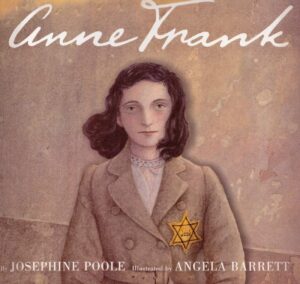

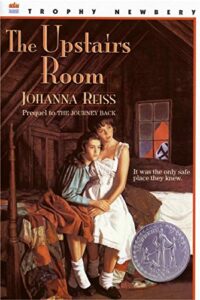

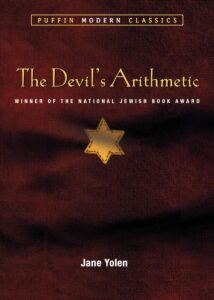





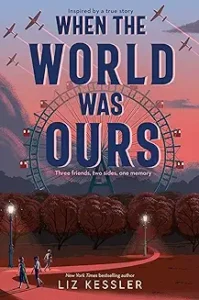




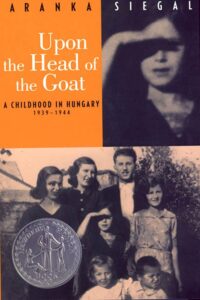



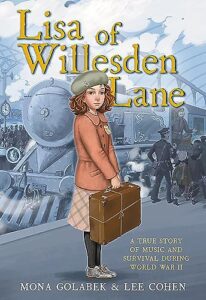


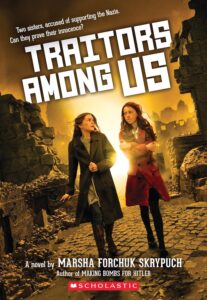


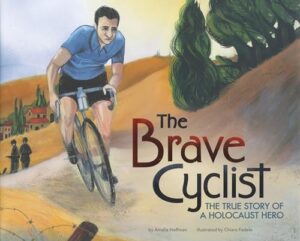
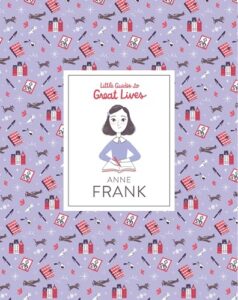










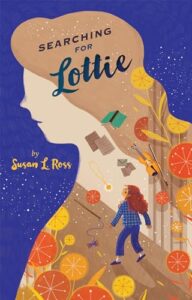






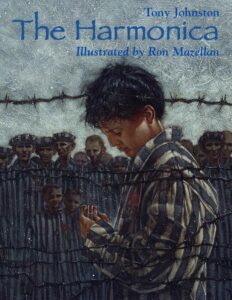


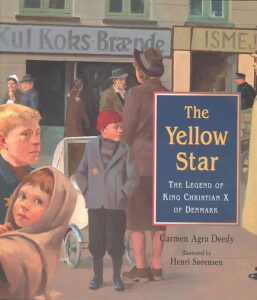
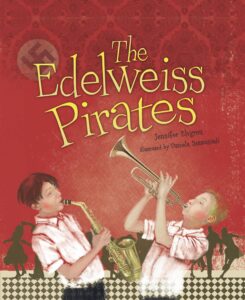









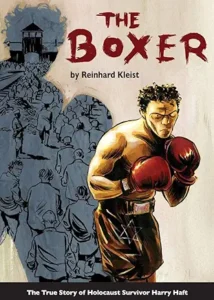
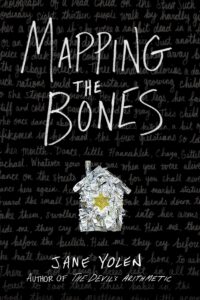

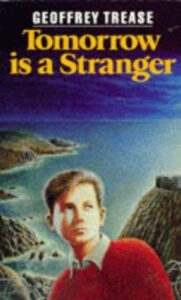




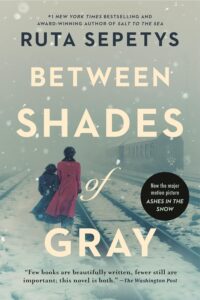


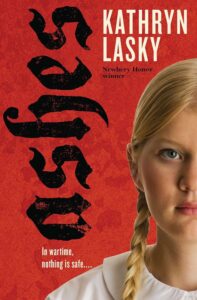
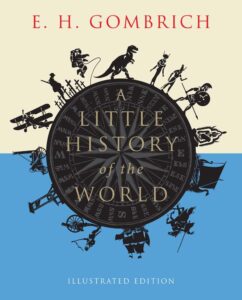
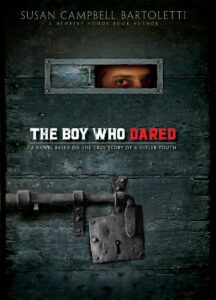


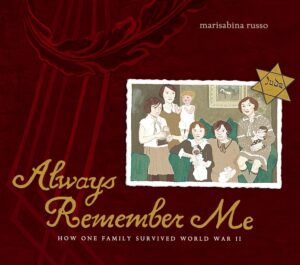



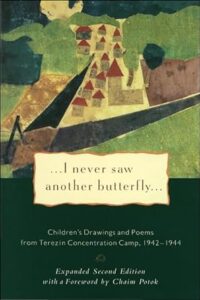

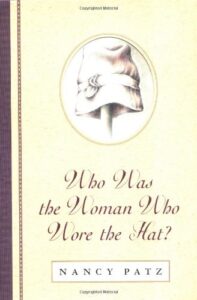







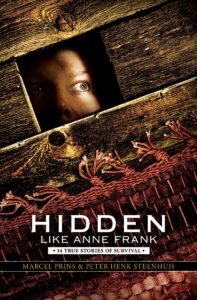


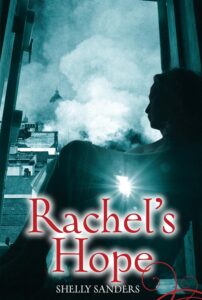



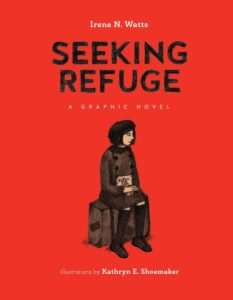

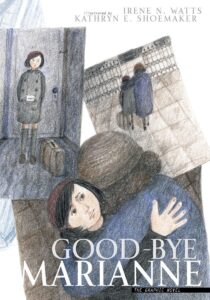


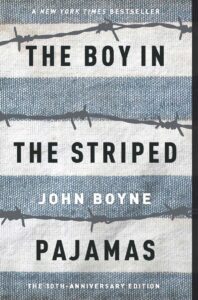
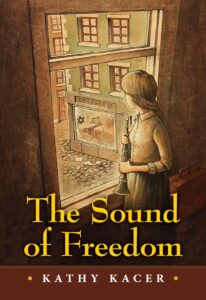




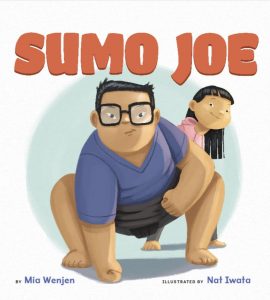







This is one of the best lists on this subject that I have seen! Luckily my kids are still too young (I say luckily cause Holocaust is not easy for me, either. Here, in Poland, almost everyone has a heart-breaking story of it and take it extremely personally. I am no different) and I still have some time to grasp it and then listen to questions “But…why? How?” that I don’t have answers for…
Anyway, thanks for this, you have done an amazing job, as usual!
Thanks so much Alexandra and I just finished your Poland books for kids list and will be posting in a few weeks. It’s funny but it was really hard to find books for kids on Poland that weren’t fairy tales or about the Holocaust. I have 10 books set in Poland on the Holocaust itself, I think. I’m going to see if I can find more characters who are Polish in children’s books but so far I am coming up dry.
Aw, I thought you forgot about it! Sooo nice :))
Yes, I believe the majority of books that are themed “Poland” in English are also themed “Holocaust” or “IIWW”…I can’t wait to check this list of yours out!
Have a happy day today 🙂
Hi Alexandra,
No, just so slow. I’m having such trouble finding non Holocaust or fairy tale books with Polish characters though. Maybe when I post it, we will get some help from readers.
What a fantastic list – I’m going to make a note of it. Thank you researching the area so thoroughly and providing options for every age group – that must have been gruelling work.
Have you come across My Secret War Diary by Flossie Albright? It’s actually about the second world war, but I thought you might be interested in it. It’s densely written, very thick book, but has a scrap book feel with so many tiny flaps, pullouts and pictures that it doesn’t feel overwhelming. My daughter (now eleven) was given this by her grandmother last year and it’s a book that she often pulls out to read in bed. Not only is it an amazing insight into what living through the second world war was like from a child’s perspective, but it’s also a general source of inspiration for diary-writing.
Thanks so much Florence. I think I have been thinking about and working on this list for three years. It wasn’t grueling though. Honestly, I love making children’s book lists but it was more waiting for some of the books to float over to me via blogs.
Thanks for the book recommendation, The Secret War Diary. I’ll add it to the list. Holocaust related, yes?
This is a carefully researched list. Thanks for putting it together. In high school, my daughter took a class in holocaust studies and I would have to check whether she read all of them. I do remember that she was profoundly affected by that course as there were so many life lessons to be learned.
Hi Barbara,
Thanks so much! I have a few more great book suggestions that readers just suggested in the comments so I’ll add those too. Wow, a Holocaust studies class would be heavy and it would be impossible not to be affected by it. You must have a really wonderful high school to study that!
Thank you for this list – all are new to me except “The Book Thief” and of course “The Diary of a Young Girl.” I’m pinning this so I remember when my girls are older.
Thanks so much Mud Hut Mama. I’m not sure when my kids will be old enough for the list but maybe when they start studying WWII in high school?
I love The Book Thief–it’s amazing and powerful.
I have a few others, two nonfiction books: Beyond Courage by Doreen Rappaport (about the Jewish Resistance)–great book & photos.
I haven’t read either of these, but Hitler Youth by Susan Campbell Bartoletti is supposed to be very good as is a fictionalized book based on the author’s aunt’s experience–that would be Jennifer Roy’s Yellow Star.
One of the most powerful, heart-wrenching and harrowing books I’ve ever read was Ruta Sepetys’s Between Shades of Gray. It’s not about the holocaust directly, but it’s about Stalin’s mass murder and deportation of millions of Lithuanians. Definitely for older teen readers.
Another is equally horrific–it’s Sally Gardner’s Maggot Moon, a sort of historical dystopia which re-imagines a world where Hitler might have won the war, where the main character, a bright dyslexic boy lives in a completely totalitarian regime called the Motherland. The MC Standish Treadwell has great voice, but it’s violent and intense and so effective–again for older teen readers. This book would be a great companion book for holocaust studies.
Hi Maria,
Thank you for the wonderful YA additions! Adding to the list! They sound very powerful!
Have you read “The Hiding Place” by Corrie Ten Boom? I highly recommend it.
Thanks MaryAnne,
The Hiding Place sounds wonderful! I’ll add to the list!
Great list! The Book Thief is one of my all-time favorite novels.
If you haven\\\’t listened to the audio version, it\’s really amazing.An interesting title for teens is Kathryn Lasky’s Ashes. It\’s told from the perspective of a German girl who refuses to join the Hitler Youth.
Hi Mary,
Thanks for the Ashes book recommendation. I’ll add it to the list. There are so many interesting perspectives for kids to view the Holocaust from, I’m realizing. It makes the fiction books so powerful! Ok, now I need to know what happens to her after she refuses to join Hitler’s Youth program. I hope she ends up ok!
I am with you, I avoid this subject when choose books, but it is necessary to read something about it. Thanks for putting together a wonderful list.
Thanks so much iGameMom!
Quite a collection there. I agree Holocaust issue is not a very common discussion but its good for kids to know about it.
Hi Viren,
Yes, when they are older and curious I am thinking. I’d even save the picture books for when they are older — middle grade perhaps. It’s such heavy stuff for elementary school. I think slavery and Civil Rights is enough for elementary school in terms of horrific lessons from our history.
Wonderful post Mia. I have read Anna Olswanger’s GreenHorn and sobbed for the last half of it. It was so moving to read that simple story about a young child and his struggle during that time. It is a very important topic I agree. Many years ago I read “The Hiding Place” by Corrie Ten Boom. It opened my eyes to this horrific period in time but also demonstrated to me that amongst vast evil and oppression, there are brave everyday heroes who will defend the weak and infirm regardless of the risk to their lives. For this reason I want my daughter to one day understand about this period in history, so thank you for this fantastic list.
Great to have you back on the Kid Lit Blog Hop. Cheers Julie Grasso
Hi Julie,
I haven’t read Greenhorn yet but the two blog reviews stopped me in my tracks and I could not stop thinking about that poor little boy with his Altoid tin can full of soapy fat that represents the only physical memory of his mother. So sad and yet such a powerful and true image of what happened.
MaryAnne of Mama Smiles told me about The Hiding Place too! Great minds think alike. I will add all these great suggestions to the list! Thank you!
Bookmarking this list. I am both drawn to and repelled by stories of the Holocaust. I have only read The Diary of Anne. I want to read some others here like The Hidden Room and Number the Stars. I just recently saw a repeat of a 60 minute segment about a man who escaped from a work camp in North Korea. There is a book about him called Escape From Camp 14. It is horrifying what is still happening in the world.
Hi Ann,
I’m the same. Number the Stars is very uplifting though so that would be a great one that is actually feel good! The Hidden Room sounds great too. I want to read that one.
Oh, Greenhorn is so haunting, so beautiful. I really enjoyed it as well. The Book Thief is in my top 5 books of the last 10 years. I just LOVED that book. I get chills everytime I think of the story The Word Shaker from the book. It’s rare to have a book elicit such a strong emotional reaction, but The Book Thief did that to me.
Such a difficult topic, but definitely not one to be avoided or swept under the rug. I’ve pinned your list – great resource!
Thanks for linking in the Kid Lit Blog Hop.
Thanks so much Renee. I need to get my hands on a copy of Greenhorn. Sounds powerful. There are a few other books on that list I want to read too. The Hidden Room keeps getting recommended too.
“Great post on a very tricky subject for children. I’d add in E.H. Gombrich’s “A Little History of the World” for an intelligent explanation.”
From Alex in my LinkedIn network.
Thanks for this compilation! As an intermediate reader about age 10+, I was fascinated by many of the books you’ve mentioned – I’ll have to read through them again. Still haven’t gotten to The Book Thief yet, and that’s been recommended to me many times!
Maus is good; we even used it in a college course on Holocaust literature.
Hi Brittany,
Please let me know which of the books on this list that you liked the most. There are so many good ones on the Holocaust; I think the bar has to be much higher to get these kinds of books published. I also like how there are so many stories from so many different perspectives on the Holocaust. It makes you realize how this horrific event affected everyone and in so many different ways.
I loved The Book Thief. Haven’t read any of the others. I recommend Morris Gleitzman’s series Once, Then, and Now for younger readers. I also really enjoyed Code Name Verity… if you’re looking for the kind of book that will break your heart.
Thanks for your great book recommendations Rebekah. I will add them to your list. I love and hate a book that breaks your heart. It’s so hard to read but then I want to read it over and over again. The Holocaust books are like that for me. It’s such a deep emotional experience.
Fabulous list for us for the future. Thank you. Not about the holocaust but about the Ww2, two other great books are Empire of the Sun (Japan) and Shirley Hughes’ first chapter book Hero on a Bicycle (Italy)…
Thanks so much Culturebaby for your two great WWII book recommedations!!
I’m going to look into a few more of these books. I’ve read books to my kids about WWII, but we mainly focused on books where people were hiding other people from the Holocaust. I haven’t dared broach what happened in the actual camps.
One book I would recommend for older readers is called Tales of a Child of the Enemy. It is a collection of poetry by a German woman, who found out about the Holocaust as an older teen. It includes poems about her childhood in Germany, finding out about the Holocaust and people’s reactions to her knowing, as well as poems about Jewish people’s experiences of the Holocaust.
Thanks for linking up to the Homeschool Link Up!
Hi Christy,
Thanks so much for your great book recommendation! I’ll add it to the list! I don’t think I have a poetry Holocaust offering so this is perfect!
I know this is an older thread but I am trying to find a book for my daughter (8th grade) to read as an alternative to the book “Night”. I want her to learn about the holocaust, but that book is far too graphic for her. She suffers from extreme anxiety and has PTSD since her brother/my son died by suicide. She can’t read anything with much detail of the atrocities of the holocaust. Her teacher gave me a copy of “Night” to preview and there were several instances where children were hanged and how they looked was detailed. Her brother hung himself and the last thing she needs is those kind of images in her mind. The descriptions of other things would also have been too much for her to handle. Can you recommend a few of the books that would get the concept across but have very little (or nothing) in the way of graphic descriptions and details? Since the rest of the class will be reading “Night” I want to find a book that I can tell the teacher she can read instead. I’m hoping you can help me with this. Thank you!
Hi Bonnie,
I would recommend Number the Stars by Lois Lowry as far as gentle holocaust book. Is this the right level for her though? It’s a middle grade chapter book (ages 9-12)– Danish rescue of Jewish family. She could continue with The Endless Steppe which is also middle grade (Jewish family forced to Siberia but they all survive and even make a new life for themselves during that time). The Upstairs Room is good too but a few innocent citizens get shot and killed by Nazi soldiers in retaliation so that’s a little graphic (two sisters hidden during WWII but no one gets caught). Also there’s a scene where the soldiers search their house and they are hiding in a hidden room but it’s a tense moment.
I haven’t read all the books on this list — I was also collecting books as I found reviews. The Book Thief is also a good YA one. I read it a few years ago and I don’t remember it being that graphic though it is narrarated by Death but he’s not without a gentle side.
Pair Number the Stars with this picture book: The Yellow Star: The Legend of King Christian X of Denmark by Carmen Agra Deedy as it will show that the heroic nature in some during this terrible time.
The Cats of Krasinki Square by Karen Hesse is also good. Hope this helps!!!
Thank you for dealing with such a difficult subject for parents to discuss with their children. This is a helpful, amazing list.
I’m so glad you find the list helpful Bonnie! I’ve been trying to keep the list up to date. It’s such a hard thing to read about but so important.
Here’s another one you might want to add to your list.
Whoops. I tried putting a comment that included a link to my book review of the Magician of Auschwitz by Kathy Kacer but the comment box won’t accept the URLs. The book presents a unique viewpoint.
Thanks for your great book review Bonnie. Sorry about the link problem. I’ll add your link here: https://bferrante.wordpress.com/2015/04/13/kacer-kathy-the-magician-of-auschwitz-illustrated-by-jillian-newland-book-review/
I am happy to introduce my new novel, Esfir Is Alive. It is a compelling story inspired by a real-life heroine, a 12-year-old survivor of a horrendous massacre of 50,000 Jews in 1942. In moving and vivid detail, the book imagines the protagonist’s life in Poland during the interwar years and afterwards.It has just been selected as a 2016 Foreword INDIES Book of the Year Award Finalist.
For your young adult/adult educational outreach programs and book club, my book features very interesting content, including a unique animated book trailer and a provocative Reading Guide.
The Jewish Book Council has featured my writing on their blog.
I would be happy to supply you with more information.
Thank you.
Andrea Simon
Congrats on your book Andrea! I’m glad you added it to my Holocaust list. Thank you!
From a perspective of what was happening in the US at the time, there are 2 books by Patricia Reilly Giff called “Lily’s crossing”, and “Willow Run” about 2 (eleven?) year old girls who are best friends. In “Lily’s Crossing”, her father goes to the war and a refugee child comes to stay next door, her best friend’s brother becomes missing in action. There is light mention, but nothing in detail about what happened in Europe. “Willow Run” occurs the same summer from her best friend’s perspective, who has to move to Willow Run, Michigan with her family so her father can help build b-24 airplane bombers at the Henry Ford plant. Her brother is the one who becomes missing in action on the beaches of Normandy. Some light mention of a war in Europe, fears, Hitler, lack of foods, etc. but mostly safety in the US. My 10 yr old niece recently asked what the Holocaust was when she heard it mentioned. She loves to read, but since she is a worrier by nature I plan to give her 3 books for her birthday with an order to read them in, “Lily’s Crossing” first as it comes first in Patricia Reilly Giff’s books – she will relate to it bc it’s her name, it’s about her age, its in the US. It shows safety in the US with a light introduction to wartime. 2nd – “Willow Run” – it takes place in Michigan where she’s from. Also about her age, also showing relative safety in US. 3rd – “Number The Stars” – I remember reading it around her age and being very affected by it. It goes a step further to show life in Europe at that time, with Jewish people escaping. Everyone makes it to safety, aside from a few members of the resistance, which brings sadness, but not any detailed “in the moment” descriptions. The main character and best friend (who is Jewish) are my niece’s age 10, with a 5 yr old little sister like my other niece (her sister) – who acts surprisingly spunky like her, and they are Lutheran. I was curious to refresh my memory of any books I had read in the past that would be the next step of showing Jewish people in hiding and the camps, but I’m not sure from this list. I think she will still be curious to know more, but she may be too young. I just read one called “Torn Thread” by Anne Isaacs which is a true story and very good, but very in depth. “Night” was very good, but I read it too long ago to remember details. And of course, “La Vita e Bella” is a wonderful film that makes me sob every time, but as an introduction could skew what really happened. “Aux Revoir Les Enfants” is another good film. I also saw “The Boy in the Striped Pajamas”, which was good, and I wonder how the book is. From a young age I was fascinated/horrified by the Holocaust, and have read a lot about it, as well as visited some of the locations as an adult. I remember there being a book at the library about Anne Frank with a lot of real photos of her, less of a novel, more for a preteen age, perhaps it was “Anne Frank:Beyond the Diary”. I also recall as a child seeing the film “Empire of the Sun”, which greatly affected me, but then also gave me nightmares of tanks driving down my street. My aim is to introduce the time to my niece in a way that she first sees it was safe in the US and where she lives and then if she has more interest, gradually introduce her to something more in depth about the Holocaust.
Hi Julie,
Thank you so much for those book recommendations. It’s a topic that my kids learned about in 5th grade through picture books in class. I find it hard to read some of these stories because they haunt me but I am always glad that I did.
I am looking for a book that I believe is a children’s book:I am not sure when the book was published but I read it within the last year or so. It was about a Jewish woman who was telling someone about her experiences as a young girl during the Holocaust. She was wealthy and was going to school, maybe in the country. The Germans attacked the school. She refused to run to the woods with the other children because she was proud of her new shoes and did not want to ruin them. Instead she hid in a bell tower. She heard other students being shot. Then she hear steps coming up the wooden stairs. It was a handicapped boy student that other students had made fun of. He helped her get to his farm where she hid in the barn. She was there for a very long time. The boy’s family fed her, but they could not give her much. The boy who helped her hide was killed because of his handicap. Later in life she married, and gave birth to a son who she named after her rescuer. That is all I remember.
It’s the story from R. J. Palacio’s add on books to Wonder. It’s the Julius story. You can get the story as a short story via an ebook or the compilation of the four stories: THE WONDER COLLECTION.
That was my favorite story of hers also. Haunting and beautiful and hopeful and inspiring. I love her books!
Sometime between 1959 and 1961, I read a children’s book I remember as being called Four Friends, about four children from different families and their experiences during the war in Germany. At least one died, as I recall. It was pretty dark for a child in first or second grade, but I found it fascinating.
I’ve never been able to find this book since and very likely have the title wrong. Do you have any idea what book this might have been?
I’m so sorry but I’m not familiar with that book. Could it be this one? Four Girls From Berlin: A True Story of a Friendship That Defied the Holocaust
A book I used to read to my fourth graders that was a powerful message of standing up for others was: Terrible Things: An Allegory of the Holocaust by Eve Bunting. This is a must read for all elemenetary school students. I think it’s an important addition to this list.
Thanks so much for adding to this list Carol!
I grew up in the 70s and 80s and read two books that related to survivors that I have not been able to find (I’ve been searching for one today, which brought me to this list). I don’t remember the names of the books perfectly, but one was called (I believe) “The Children In the School” which was about a group of children in France, maybe? and a teacher or teachers bring a group of Jewish children to hide in the school.
The other one was called “A Flyer for Emily” and was about a boy who befriends a girl who just moved to his building (probably in NYC) and we learn at some point she is a survivor of the Holocaust. I have searched for both of these books and found neither. I guess I just wondered if you could find them or if someone here had heard of them.
Hi Michael,
I wasn’t able to figure out either book. I hope my readers might know either book?… Can anyone help?
Lest Innocent Blood be Shed. It’s the story of the town of Le Chambon.
Wow, what a great list.
I would add The Safest Lie by Angela Cerrito. I thought it was a great book, and it was a National Jewish Book Awards Finalist.
Thank you or this wonderful list! Would it be possible to add the appropriate age range to each listing? It would be so helpful for those of us with younger children. Thanks again!
I am trying to find a book based on a young boy, 12 or 14 who goes hunting only to come back home finding his home burned down and parents are gone. He is told the nazis killed or took his parents. He goes to a concentration camp and finds them, maybe killing a guard to save both of his parents who are emaciated, once he find them. My son has read it twice, once in class and the other on his own. He is unsure of the name of the book, fiction or non fiction, and believes the boys name is Samuel. ANy help would be great, thank you. He said the cover is partially orange with the boy on it
Hi Felicia,
I’ll ask in my PragmaticMom Facebook group. Meanwhile, I searched my list and found possibilities:
Hunger Winter: A World War II Novel
Escape from Warsaw by Ian Serraillier
Survivors of the Holocaust: True Stories of Six Extraordinary Children by Kath Shackleton, Illustrated by Zane Whittingham
Thanks for this compilation. I agree with you, the Holocaust is a terrible genocide and even worse is the fact that modern children do not know what it is. Therefore, books that somehow tell about this genocide, in a mild form, can help to familiarize the new generation with the understanding of the whole tragedy. I advise you to also post this list on Instagram, because taking into account the popularity of this social network among children of generation Z, a lot of children will be able to learn about these books. I see there periodically posts with collections of books on different topics and many times noticed that such posts have about 23 thousand likes! I am sure this is because the authors of such posts use the services of https://soclikes.com/ in order to wind up likes for Instagram.
I grew up in the 70s and 80s and read two books that related to survivors that I have not been able to find https://penzu.com/public/ad4ed975 : A World War II Novel